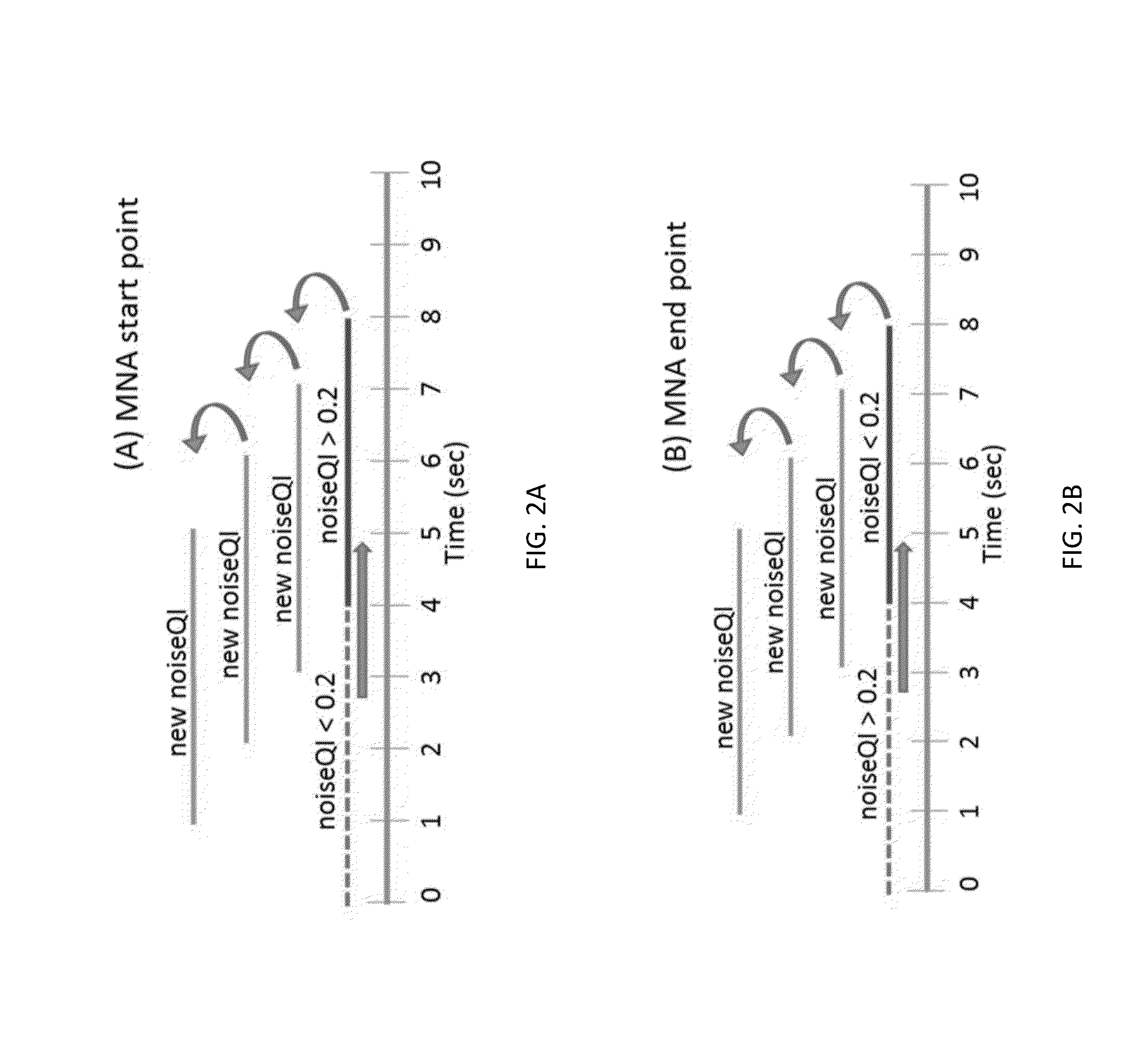Motion and noise artifact detection and reconstruction algorithms for photoplethysmogram and equivalent signals
a technology of motion and noise and reconstruction algorithms, applied in the field of pulse oximeters, can solve the problems of imposing a huge limitation on the usability of ppg for ambulatory monitoring applications, erroneous estimation of hr and spo2, and high artifact detection and reconstruction accuracy of ppg, so as to achieve the effect of reducing false readings of heart rate and oxygen saturation values
- Summary
- Abstract
- Description
- Claims
- Application Information
AI Technical Summary
Benefits of technology
Problems solved by technology
Method used
Image
Examples
example 1
[0040]Experimental Protocol and Preprocessing
[0041]PPG data were collected from healthy subjects in lab-controlled environment and also from patients enrolled in an emergency room. For the laboratory-controlled environment, both forehead and finger worn PO sensor data were collected from healthy subjects to have more control over the duration of MNA generated data to ensure that the detection algorithms were tested on a wide range of MNA durations. Data from participants recruited from the emergency room environment provided more realistic information about MNA in practice since participants in the lab-controlled study were allowed to move freely as long as the sensors were positioned properly. PPG data were collected by custom-made reflectance-type forehead and a transmission-type finger POs.
[0042]In laboratory-controlled head and finger movement data, motion artifacts were induced by head and finger movements for specific time intervals in both horizontal and vertical directions. ...
PUM
 Login to View More
Login to View More Abstract
Description
Claims
Application Information
 Login to View More
Login to View More - R&D
- Intellectual Property
- Life Sciences
- Materials
- Tech Scout
- Unparalleled Data Quality
- Higher Quality Content
- 60% Fewer Hallucinations
Browse by: Latest US Patents, China's latest patents, Technical Efficacy Thesaurus, Application Domain, Technology Topic, Popular Technical Reports.
© 2025 PatSnap. All rights reserved.Legal|Privacy policy|Modern Slavery Act Transparency Statement|Sitemap|About US| Contact US: help@patsnap.com



